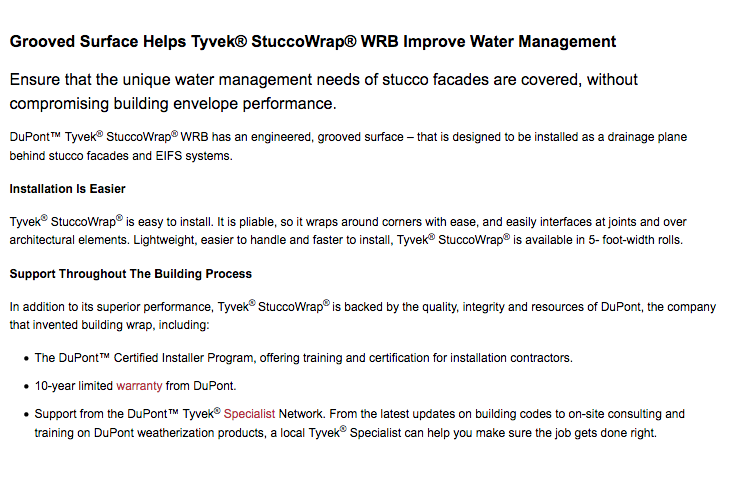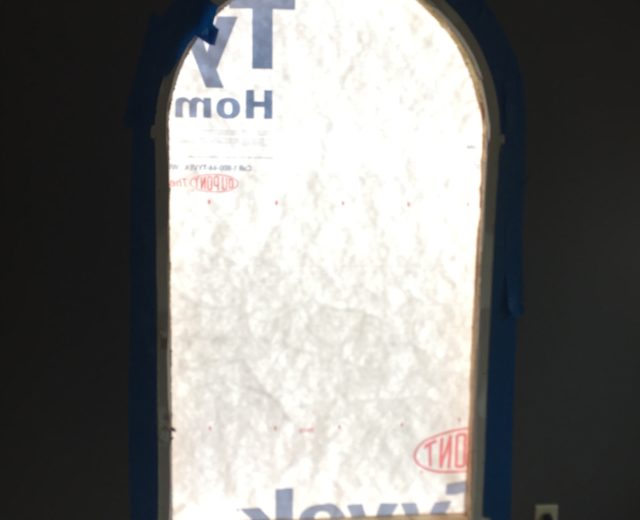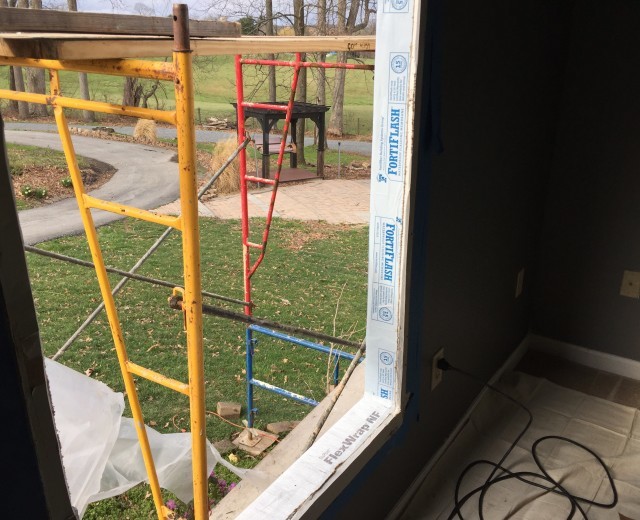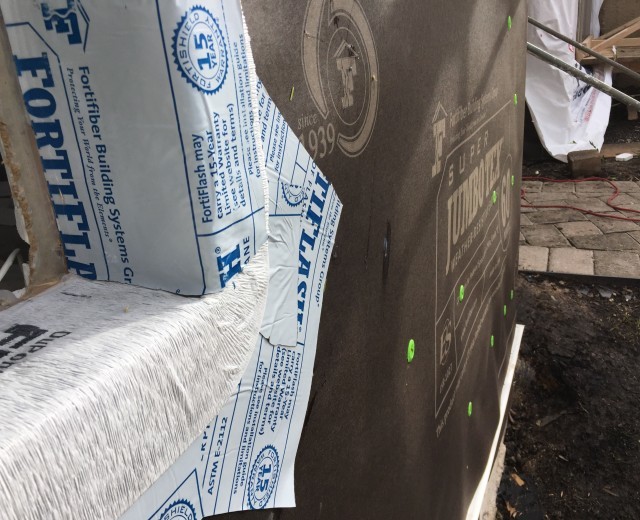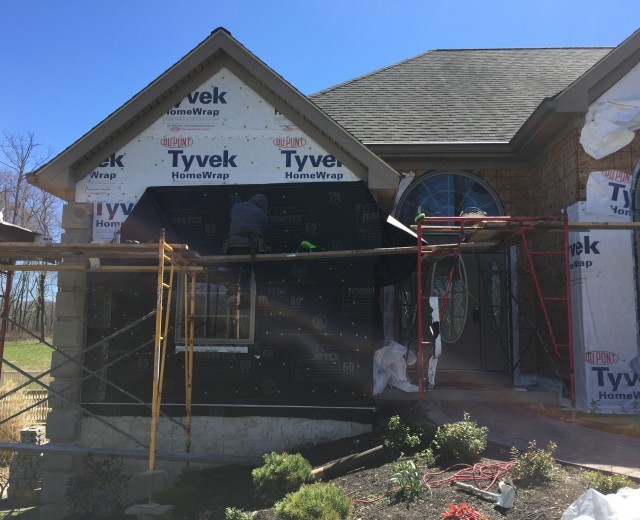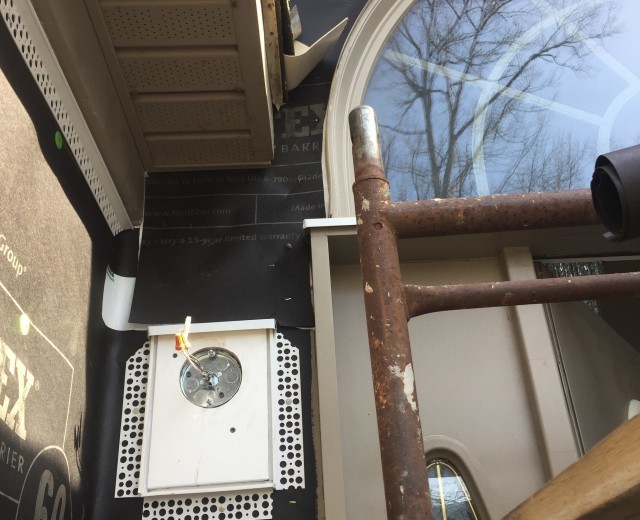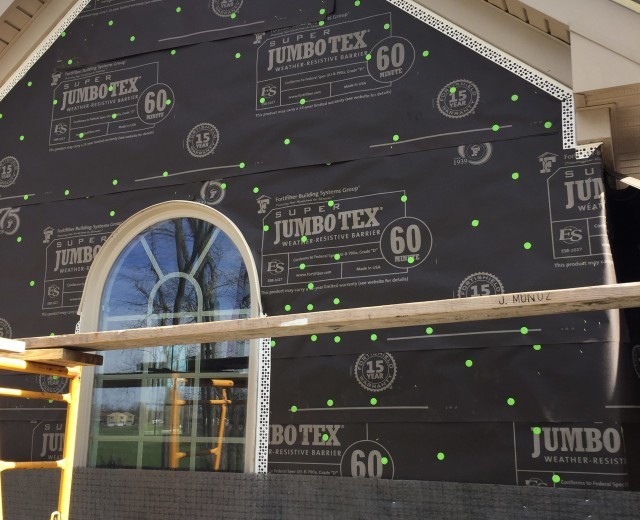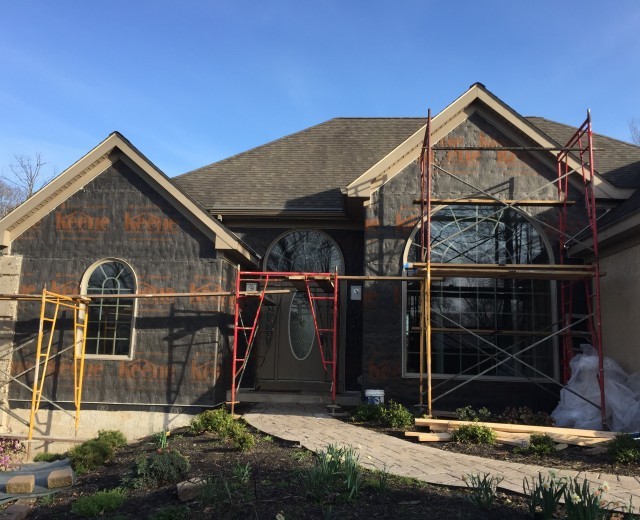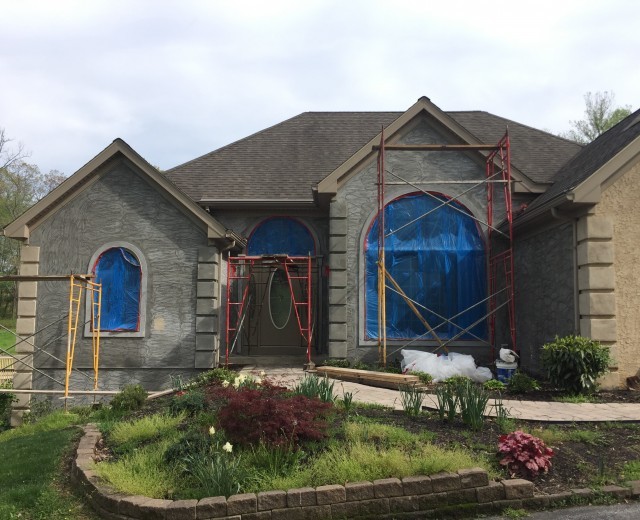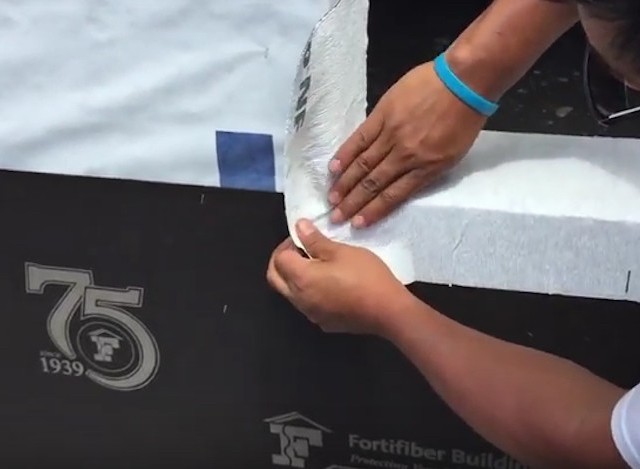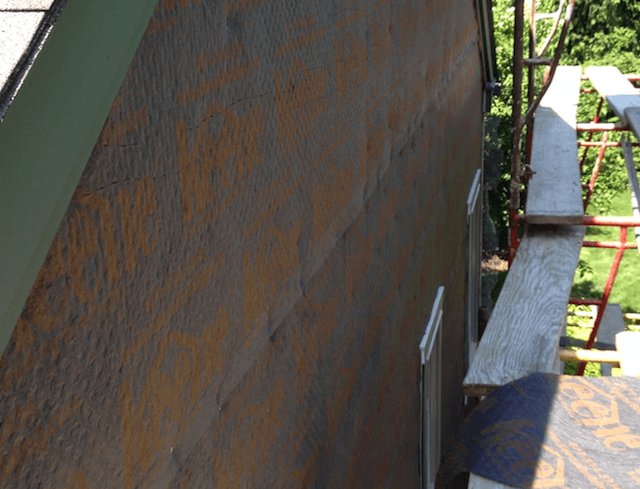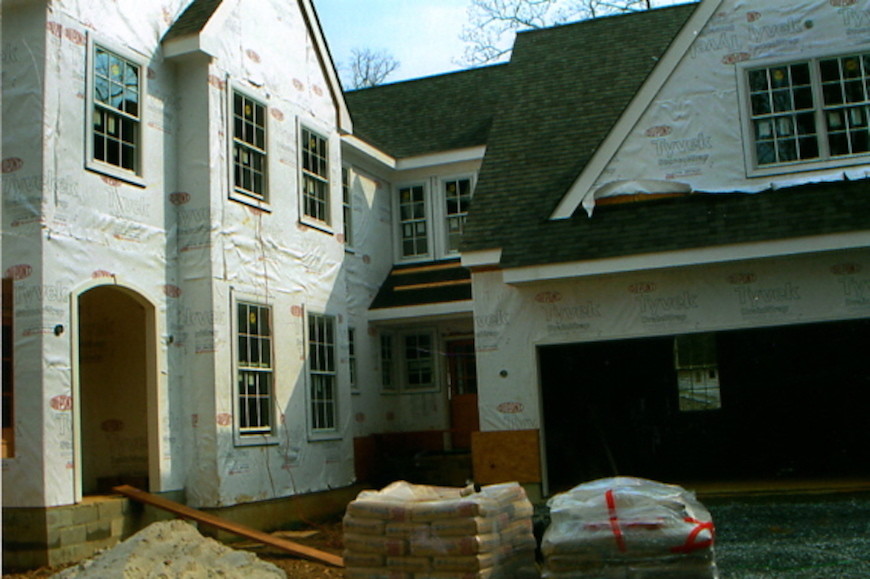
Should you rely on Tyvek Stucco or Home Wrap as your one and only water resistant barrier in a cement plaster stucco 3 coat system?
The problems with stucco has been well-documented for years. Here in PA the lawsuits to builders and companies has become more and more popular over the past years. With the time and unfortunately bad experiences many contractors, builders and home owners have learn the wrong way.
The basics of the stucco 3 coat system.
As we all know traditional three-coat stucco is a mix of portland cement, lime and sand, generally installed over some type of sheathing materials such as plywood and more recently OSB (oriented strand board), a water resistant barrier paper is installed over the sheathing by using either nails or galvanized staples, traditionally it has been 15 lb. tar paper or any grade D building paper, but now materials such Tyvek Stucco Wrap is been used interconnected with flashings, window, door openings, as well as other penetrations of the building and the installation of a rain screen mat to provide drainage of water to the exterior of the building followed by the installation of metal lath mesh and a 3 coat stucco system.
Stucco is actually a porous material and is designed to allow the absorption of water. The building paper or Tyvek (water-resistive barrier) acts as a drainage plane, and as the stucco dries, water flows down the building paper and weeps out the bottom of the stucco.
We have seen many builders, contractors and home owners using Tyvek stucco wrap as their only layer of water protection but the question is, should we rely in Tyvek Stucco Wrap as our one and only water resistant barrier specially when used in a three-coats stucco system?
Building Science Corporation Principal Joseph Lstiburek when tyveck issues developed said:
“The rotten problem was due in part to the lack of drainage between the hardcoat stucco and the building paper drainage planes. Papers remained bonded to the hardcoat stucco. Water stayed in the system, and the building papers (as well as other things) deteriorated. It seems that the more recently manufactured building papers don’t work as well as the old stuff and that they don’t debond as easily. Note what he said
“No drainage space means no drainage. No drainage means big trouble–Rot City”.
Now let us replace the building paper (Tar paper) in a hardcoat stucco application with Tyvek. The hardcoat stucco bonds to the Tyvek. Water stays in the system, because there is no drainage. It passes through the Tyvek in vapor form as well as by capillary transport. The problem gets worse. The Tyvek loses it’s water repellency due to the surfactants in the stucco. At least with the impregnated or coated paper you stand a chance. Sometimes the paper debonds, sometimes it doesn’t.
If you’re smart, you use two layers of paper and the system pretty much works. You stand no chance at all with Tyvek by itself.
As you see DuPont’s StuccoWrap product isn’t much better. That’s because the hardcoat stucco bonds to the StuccoWrap and therefore the assembly does not drain. StuccoWrap was developed for exterior insulation and finish systems (EIFS) where EPS foam separates the StuccoWrap from the synthetic stucco skin, I will talk about in depth about this subject in another post.
In an EIFS assembly or when is used as a first layer of a 3 coats stucco or stone water management, StuccoWrap performs spectacularly. But put a hardcoat cementitious stucco directly over StuccoWrap and the drainage is compromised.
Personally I actually love either Tyvek Home Wrap or Tyvek Stucco Wrap when is used as a first layer of protection in any stucco 3 coat or manufacture stone system. Tyvek is a great water resistant barrier, it’s very flexible, easy to work with, fast to get it installed, very resistant to pulling and abuse compare to a tar paper, no matter if is winter time or summer time Tyvek is a very flexible and strong paper to work with. I always use this paper when we have very uneven, possible old wood lath or siding style walls where other papers can easily brake or crack as a base for the system. We at Rene Munoz Plastering as part of our 3 coat stucco system we always install whether a layer of Grade D tar paper as a second layer of water protection or better yet a double felt tar paper such the super jumbo tex over the StuccoWrap in a portland cement stucco application, we get fantastic drainage between the back of the building paper and the front of the StuccoWrap. This is our approach of choice in my opinion for cement stucco applications.
Over all, to have a better water management and drainage behind our stucco or stone I will really suggest the use of a drainage plane such tyvek stucco wrap , a double layer of grade D paper plus a rain screen drainage mat installed along with proper window installation, sticky window flashing, drip cap over the head casing of each window and door, proper flashings through out the system, Ez Bead around windows and doors, weep screed, expansion joints where necessary and finally one of the most important pieces of the puzzle, the kick-out flashing diverters. If we use the previous system and we follow manufacture specifications we should not have any stucco problems at all.
Have you experienced any Tyvek Stucco Wrap problems?, do you have suggestions for a better Tyvek Stucco Wrap applications?. Let us know in the comments section below.


